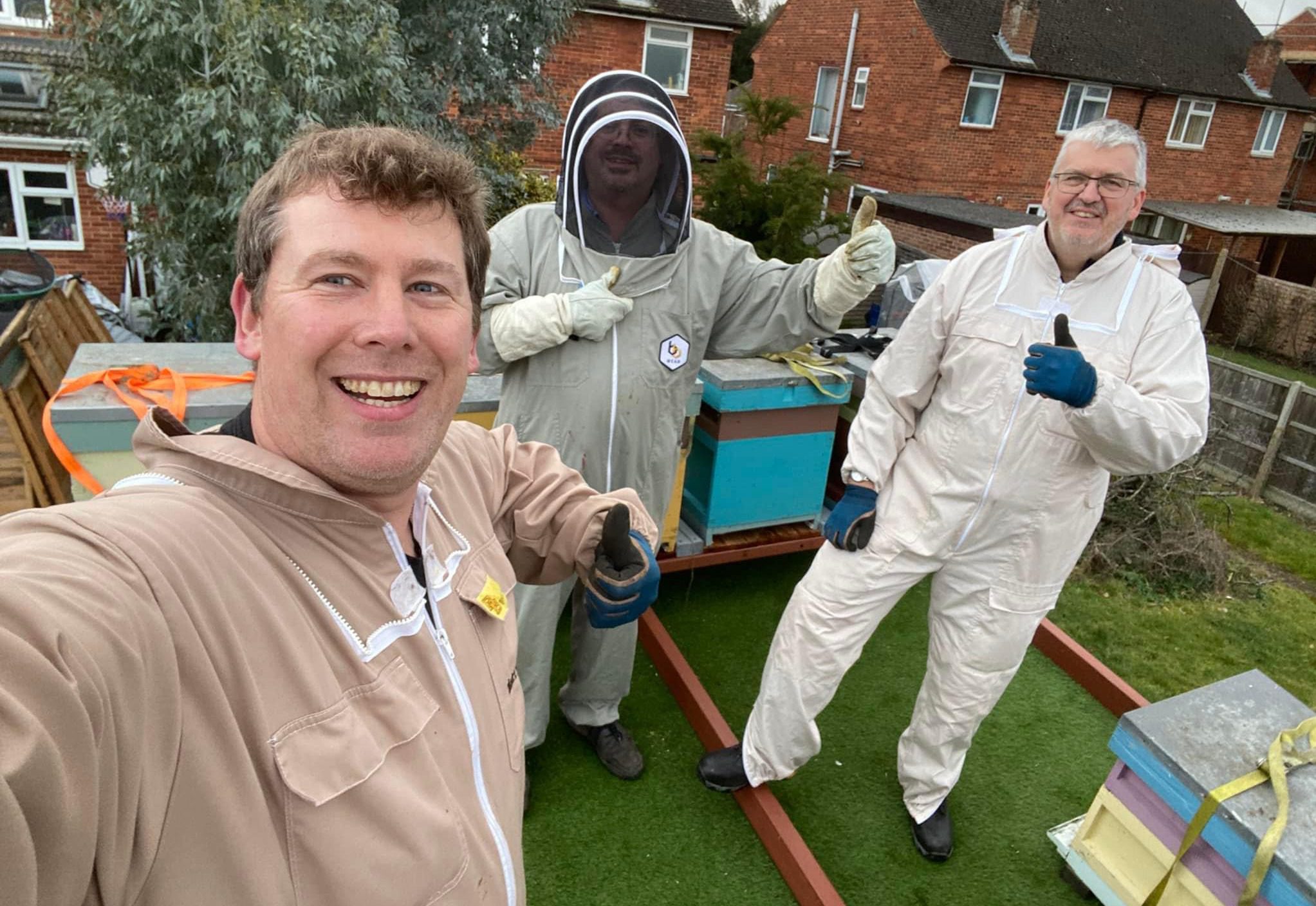FOR most people, a noisy bee buzzing around their head is a summer nightmare that makes them run for cover.
But for Matt McTernan, this scenario is a little bit of heaven and, as far as he is concerned, the more buzzing the better.
Matt is the face (often half hidden behind a hat and veil) of the Earley Garden Bees. Happiness for him is tending to his nine hives or removing a bee swarm from a garden after receiving a frantic phone call from the homeowner.
“We hear a lot today about mental health and I can tell you that working with bees really is a wonderful way to deal with stress,” he says.
“When I’m with my bees, I am content with the world. It is relaxing and makes any issues you might have disappear.”
Like most people, Matt’s only encounter with bees was once confined to chasing them out of his house after they sneaked in through an open window. Then, 10 years ago, he went to an open day at the Berkshire Agricultural College – and got the buzz.
“I heard a beekeeper talk about what he did, and it just fascinated me,” he explains.
“I never knew there was so much about this beautiful little creature that we are all familiar with but know little about.”
When Matt’s wife, Mary, bought him an eight-week evening class on all things apoidea (look that one up) he knew he was hooked.
“I was so excited when I bought my very first hive,” he adds. “I also remember the first time I got stung but you soon get over that. Bees are awesome creatures which are so important to the environment.
“When you see them flying around it might look chaotic to the untrained eye but every bee has its own personality. Some welcome you to the hive while others hate you and will chase you. When I say they will chase you, I mean they will chase you. I’ve been pursued 25m by angry bees.”

Matt is a well-respected bee expert in Earley and beyond. His Facebook videos are watched by people all over the world and he is regularly asked to give talks to schools and community groups. He sells his honey (the bees’ honey he emphasises) and helps remove swarms from people’s gardens, on the side of village halls and other buildings.
“When someone phones me worried about a swarm on their house, I ask them to take a photo and email it to me. I want to know if it’s bees or wasps.
“I tell people never to try and hit the swam with a brush, that is the worst thing you can do. If they live far away, they should contact the Beekeepers Association who will direct them to a qualified person who can help.
“If it’s more local, I will attend. It only takes about five minutes to remove a swarm if you are experienced and know what you are doing.”
Matt says one of the best things, other than getting bees, when collecting swarms is talking to and helping people have a better understanding of bee swarms.
“So many people I talk to are afraid of bees, well afraid of being stung, so each year I post on my FB page information about swarms.
“A honeybee colony swarming is a natural process. It’s the bee’s way of reproducing to form a new colony. Swarming usually occurs between around the end of April to June but for other reasons colonies may swarm at other times.”

Bees have five eyes, six legs and can fly up to 20mph. The queen bee can lay around 1,500 eggs per day which means a whopping 500,000 in her lifetime.
“Bees don’t actually flap their wings directly,” explained Matt.
“Instead, their flight muscles pull on the springy thorax wall to make it move in and out causing the wings to move. The sound is produced by the insect’s rapid wing beats. This creates vibrations that the human ear detects as buzzing. The bigger a bee is, the slower its wings beat. The slower its wings beat, the lower the pitch of the buzzing will sound.
“Buzzing isn’t just for show. It also serves an important purpose. When certain species, such as bumblebees, visit a flower, the buzzing and vibrations of their wings and bodies cause pollen to shake off the flower.
“Bees also buzz when defending themselves or their hives, and will often get louder as they become more unhappy with you.”
So, the next time a bee buzzes into your house, don’t rush to chase it away. It is, in fact, one of the wonders of nature – and it makes wonderful honey too.














































